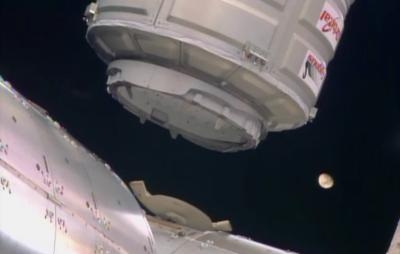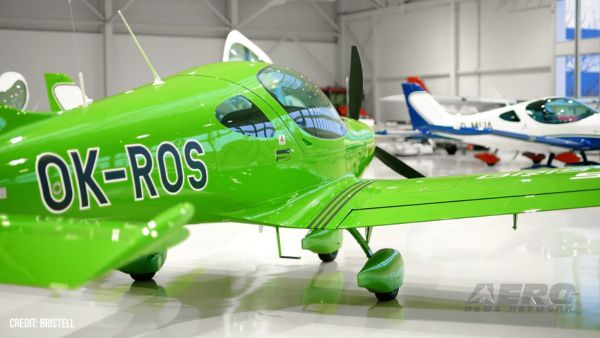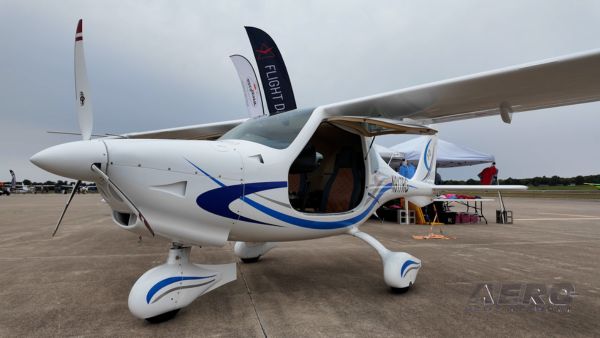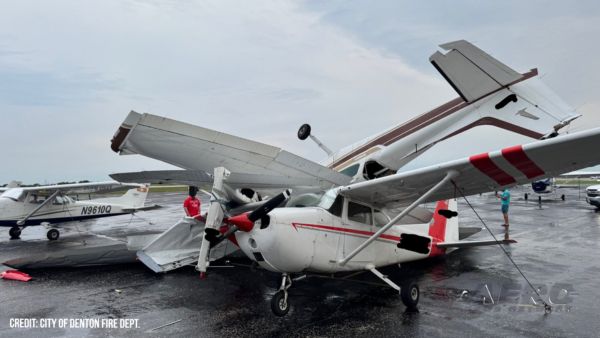Tue, Jan 14, 2014
Commercial Resupply Spacecraft Cygnus Spacecraft Docked At ISS Sunday
The commercial space industry took another step forward Sunday as astronauts aboard the International Space Station used a robotic arm to capture and attach the Cygnus supply spacecraft, which carried dozens of new science experiments from across the country and the world to the orbiting laboratory. The arrival capped the first successful contracted cargo delivery by Orbital Sciences Corp. of Dulles, VA for NASA.

Astronaut Mike Hopkins of NASA grappled the spacecraft at 0608 EST and Koichi Wakata of the Japan Aerospace Exploration Agency attached Cygnus to the space station's Harmony Node at 0805. The Expedition 38 crew members aboard the station will begin unloading the 2,780 pounds of supplies aboard Cygnus following hatch opening planned for Monday.
The cargo is comprised of vital science experiments, crew provisions, spare parts and other hardware. This includes 23 student-designed science experiments. One newly arrived investigation will study the decreased effectiveness of antibiotics during spaceflight. Another will examine how different fuel samples burn in microgravity, which could inform future design for spacecraft materials.
Orbital's Cygnus was launched on the company's Antares rocket Thursday from the Mid-Atlantic Regional Spaceport Pad 0A at NASA’s Wallops Flight Facility in Virginia. Cygnus will remain attached to Harmony until a planned unberthing in February sends the spacecraft toward a destructive re-entry in Earth's atmosphere.
Orbital Sciences is one of two companies that built and tested new cargo spacecraft under NASA's Commercial Orbital Transportation Services (COTS) program. COTS was completed late last year with an Orbital Sciences demonstration mission to the space station. Space Exploration Technologies (SpaceX), the other company that partnered with NASA under COTS, also is providing commercial resupply services for the agency. U.S. commercial cargo delivery flights to the station help ensure a robust national capability to deliver critical science research to orbit, significantly increasing NASA's ability to conduct new science investigations aboard the only laboratory in microgravity.
In addition to cargo flights, NASA's commercial space partners are making progress toward a launch of astronauts from U.S. soil within the next three years.
(Image provided by NASA)
More News
"This first FAA certification enables us to address the pilot shortage crisis with modern training solutions. Flight schools need alternatives to aging fleets with 40-year-old desi>[...]
Manufacturer Works to Set Up Shop in California Personal aviation company Jetson recently completed the first-ever delivery of its ONE electric vertical takeoff and landing (eVTOL)>[...]
Workforce Development Partnership Expands To Meet Demand Hawaiian Airlines and Honolulu Community College announced an expansion of their workforce development program with their l>[...]
Manufacturer Wiggles Its Way Into the US Flight Training Market Czech plane maker Bristell was awarded its first FAA Type Certification for the B23 two-seater, assisting its effort>[...]
Transforms Lunar Or Martian Regolith Into Materials For Self-Sustainment Blue Origin announced that its Blue Alchemist resource utilization system successfully completed its Critic>[...]
 Aero-News: Quote of the Day (09.12.25)
Aero-News: Quote of the Day (09.12.25) First-ever Jetson ONE eVTOL Delivery Goes to Oculus Founder
First-ever Jetson ONE eVTOL Delivery Goes to Oculus Founder Hawaiian Airlines, Honolulu CC Start Mx Tech Program
Hawaiian Airlines, Honolulu CC Start Mx Tech Program Bristell Receives First FAA Part 23 Certification for its B23 Trainer
Bristell Receives First FAA Part 23 Certification for its B23 Trainer Blue Alchemist Successfully Completes Critical Design Review
Blue Alchemist Successfully Completes Critical Design Review



